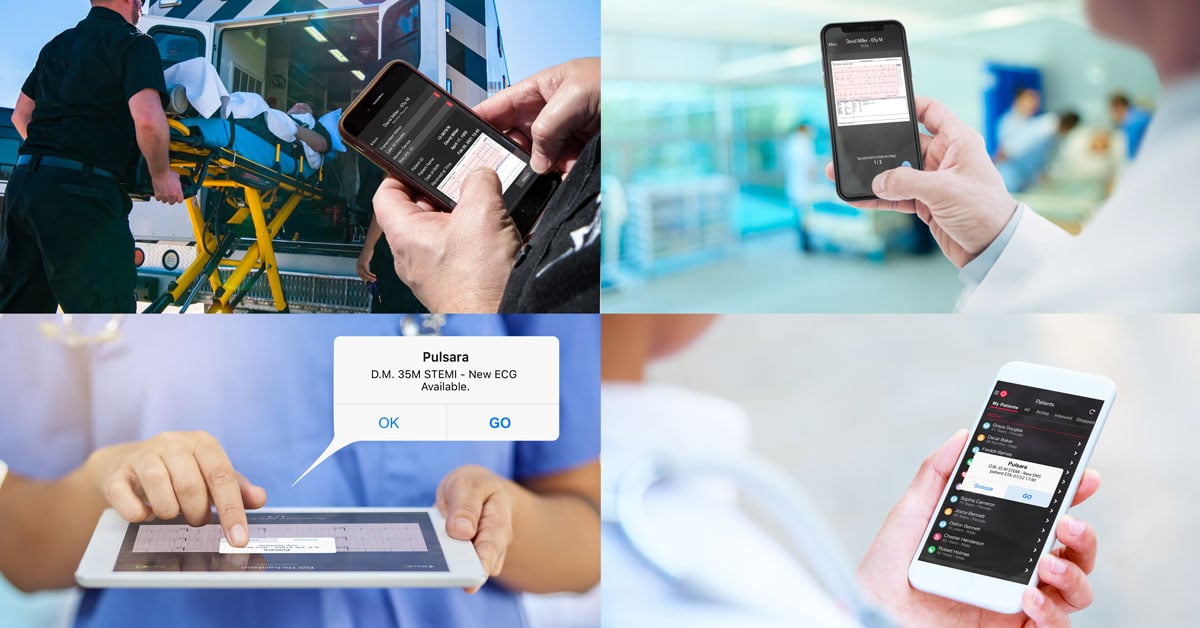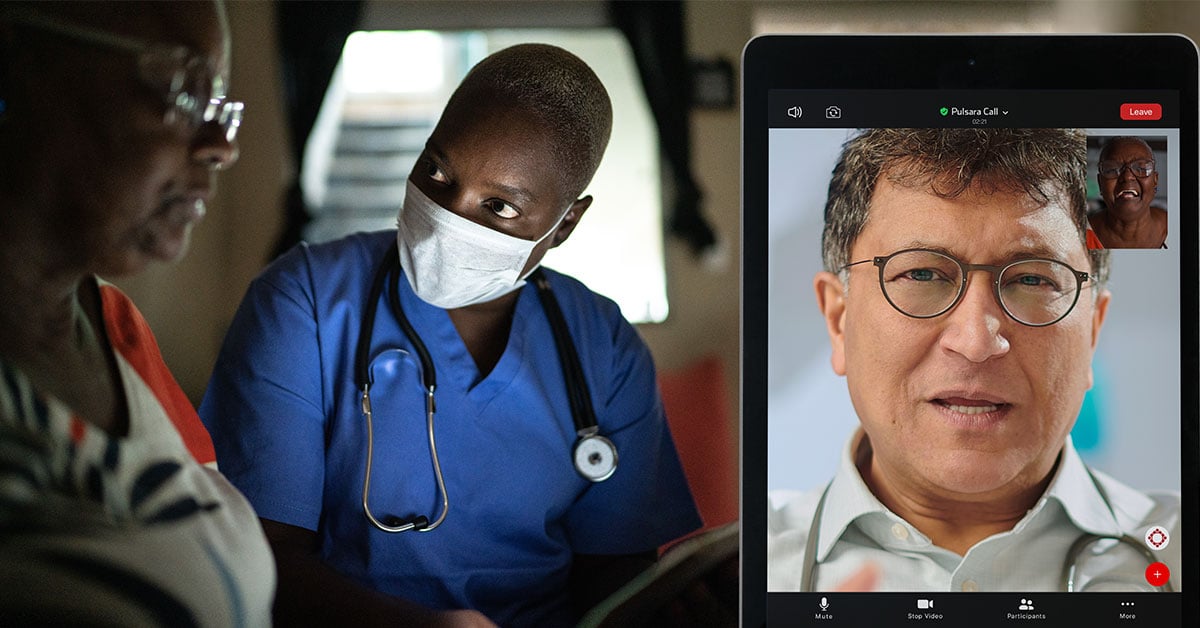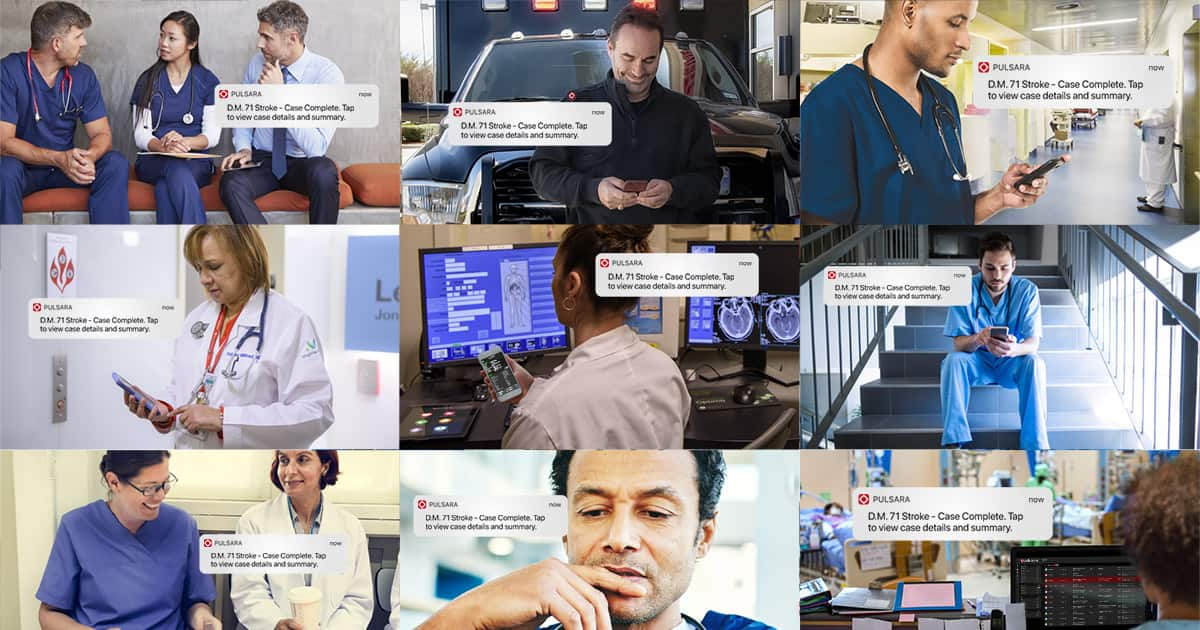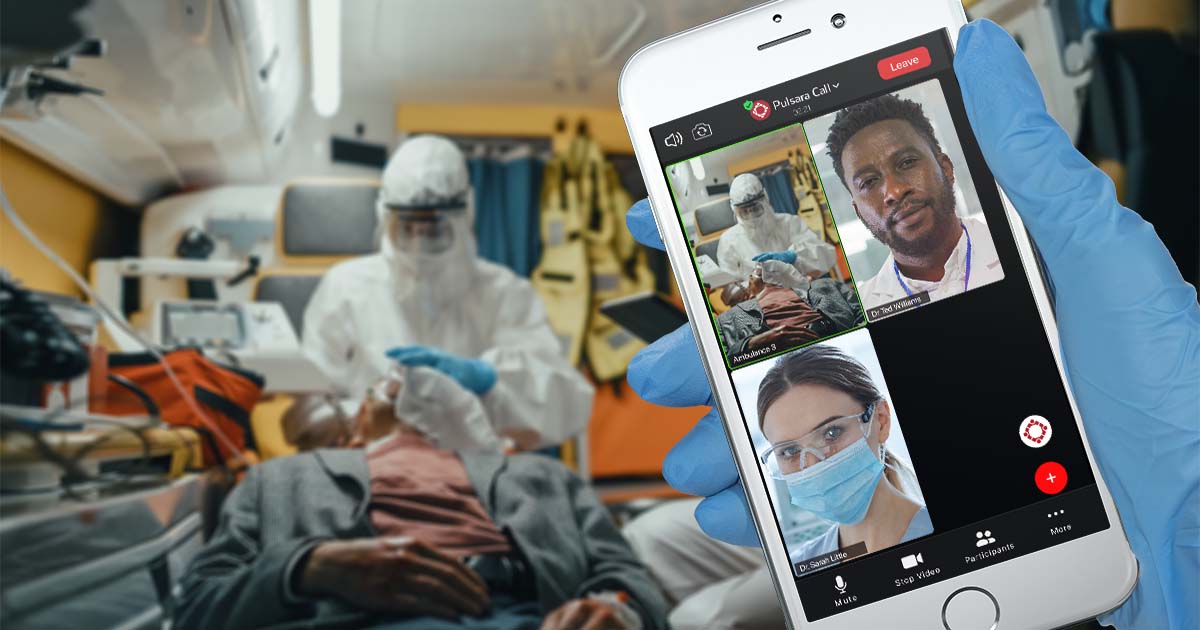Baker to Vegas: Leveraging Pulsara to Manage a Planned Event
Although they have the advantage of prior awareness and preparation, large-scale planned events pose unique challenges for emergency management...
8 min read
 Team Pulsara
:
Jan 11, 2023
Team Pulsara
:
Jan 11, 2023
![How Health Systems Are Improving Patient Care with Pulsara [Podcast]](https://www.pulsara.com/hubfs/Podcast%2020221208%20Beckers%20Interview%20with%20Kate%20Leatherby%20-%20Video%20Thumbnail.jpg)
EDITOR'S NOTE: This podcast originally aired on Becker's Hospital Review on December 8th, 2022. You can find the original post here.
__
When a health system is looking for ways to improve patient care, there are a lot of factors to consider. How will new solutions affect existing workflows, and how will they reduce time-to-treatment for patients?
In this Becker's Healthcare podcast episode, host Marcus Robertson sits down with Kate Leatherby to discuss what challenges health systems are looking to overcome with Pulsara, how the platform overlays a health system's current workflow, what innovative ways seasoned customers are leveraging the platform to improve patient care, decreasing time to treatment, and more.
Check out the podcast and read the full transcript of the interview below.
NOTE: This transcript has been edited for brevity and clarity.
Marcus Robertson
Hello, everyone. I'm Marcus Robertson with Becker's Healthcare. Thank you for tuning in today to the Becker's Healthcare podcast series. We are thrilled to be joined by Kate Leatherby, Regional Vice President for the U.S. West at Pulsara. Kate, thank you so much for joining us today.
Kate Leatherby
Thank you so much for having me, Marcus.
Marcus Robertson
Let's jump right into our conversation. When Pulsara starts working with a new health system, what types of challenges typically are they looking to solve?
Kate Leatherby
Typically, when health systems approach us, they're looking to overcome challenges with fragmented communication. They're usually looking to decrease time-to-treatment for time-sensitive emergencies. We have some great data surrounding that. Our customers typically see [average reductions in treatment times between 22% and 68%] for time-sensitive emergencies across the board, across our customer base.
There are also other reasons they look at the platform, such as scaling up communication in the context of a mass casualty incident. And the pandemic is, I think, still fresh in everybody's minds, so [some are seeking a solution for] load balancing and patient logistics movement, those types of things, to get patients to the right resources at the right time.
Marcus Robertson
Okay. So mostly to overcome fragmented communications and lay that groundwork for better infrastructure for the future.
Kate Leatherby
Yeah, that's exactly right.
Marcus Robertson
So with that in mind, how does Pulsara fit into that health system’s current workflows? Do organizations need to purchase new hardware in order to use your platform?
Kate Leatherby
That's a great question. We integrate really well into current workflows. [We take] the process that they're currently using for activating time-sensitive emergencies—STEMI, stroke, trauma—and overlay Pulsara into that. But I like to always caution people: we're not just another thing. We're improving upon existing systems that are in place. We create transparency in communication. Like you said, we lay that groundwork, that communication infrastructure. It's an opportunity to improve upon current process. We can overlay our technology and replace the phone calls, radio reports, [and other legacy technology]. But I think it's also a great time for our customers to evaluate current process and look for ways to optimize what they're already doing.
As far as hardware, there are no onsite servers required. We’re a cloud-based application. We work on Android and iOS mobile devices, and we have a browser version as well. It works well for those folks in the hospital that are seated at a computer more often than not. No hardware needs to be installed at the hospital.

Marcus Robertson
And this is again, you said, an improvement upon your existing systems, not just another thing to add in. Can you think of any particularly innovative ways you've seen some of your seasoned customers leverage that platform?
Kate Leatherby
I love this question. The most satisfying aspect of the work that I do is having a front-row seat to the amazing and innovative work that our customers are doing. I talked about time-sensitive emergencies and then using the Pulsara platform in the context of something like a pandemic or a mass casualty incident or something like that, for patient logistics and movement.
But our customers get a hold of this technology, start optimizing their workflows, and are seeing improvements in the way they communicate. They're seeing increased satisfaction because there are fewer communication errors. We know that’s a big thing that comes up whenever we have sentinel events. Communication is always an area where we can improve. So our customers really take the platform and run with it. Some of our customers are building stroke systems of care and are really enhancing how they're delivering stroke care to patients in their region. If a patient can stay at a local hospital and receive a scan and tPA really quickly, they're using the video aspect of the Pulsara platform to be able to connect with a comprehensive center, a stroke teleneurologist, and be able to better triage that patient to the appropriate place.
There are some really great initiatives. I live in the state of Colorado, and there are some really great telehealth and tele-behavioral health initiatives going on here in the state with Pulsara [that are] looking to overcome rural disparities and increase access to care for our mountainous and frontier rural areas of the state. They're also streamlining the referral process for behavioral health needs, so decreasing time to referral, and as I said, increasing access to care in rural areas. That's a big one for many states. [Some are also doing] live video consults from hospital to the field with our prehospital care providers, in order to better serve those patients. Medical directors [are given the chance] to have some transparency, getting eyes on those patients to see what their needs are and better be able to direct the paramedics in the field.

And then I talked about MCI and incident management. We're starting to see customers incorporate Pulsara into emergency operations plans as the communication piece and use Pulsara for logistics and patient tracking, to meet needs in something like the pandemic. So they have that communication infrastructure in place and they're really easily able to take care of the everyday patient, scale it up if they need to for surge events, or work on some really great initiatives in their communities, increasing access to care.
Marcus Robertson
So as thrilling as the improvements and communication infrastructure are, at the end of the day, this is all about improving patient care. How does Pulsara's platform do that? Are you speeding the patient's actual time to treatment? How are you improving that patient care?
Kate Leatherby
Yeah, that's really what we aim to do. Many of us that work at Pulsara used to be patient care providers. I was a paramedic for a long time. The patient is at the forefront of our minds all the time. Across the board, we're seeing [between a 22% and 68%] reduction in time to treatment on average for time-sensitive emergencies, and [our customers] are doing that by streamlining communication.
That amount of time can be life-changing. When we're talking about stroke, time is brain. In the setting of STEMI, time is muscle. In trauma, they really try to work within that golden hour. Minutes count. And I think a great example of quantifying the amount of time it takes to get a page out to trauma, STEMI, or stroke—think about that process. If we have a patient coming from the field, they're notifying the hospital. Somebody is taking that report from the phone or radio. They're then calling a central paging service. Who's paging out that team? That team has to receive the page, call back to central paging, and they call back to the ED to let them know the team has received that alert.
So thinking about that process, …[one of] our customers reported to us that they’re seeing about a 5 to 7 minutes decrease [in the time it takes to receive that initial alert]. That is really important, especially for those time-sensitive patients where every minute and every second counts.
Marcus Robertson
5 to 7 minutes...can literally make a lifetime of difference.
Kate Leatherby
Yeah.
Marcus Robertson
And you said you were a paramedic yourself. It is really sounding like EMS plays a huge role in decreasing these overall treatment times. You know, the relationships between prehospital and the hospital teams—how have you seen those relationships change as they are using Pulsara?
Kate Leatherby
Yeah, that's a great question. You know, wearing my paramedic hat, it's just…we've always wanted to be integrated into the larger care team. EMS is so important to the chain of survival. And with Pulsara’s technology, you have the ability to integrate into that larger care team via team communication, creating transparency amongst the team members and that continuum of care.
The other thing that I really love about Pulsara is something that was super important to me as a paramedic: getting feedback on my patients. You know, you care about your patients. It's not something where you just drop them off at the hospital and you're like, ‘Okay, I hope they do well.’ You care. You want to know that they were treated well and that they had a good outcome. So one of the features in Pulsara that's great for prehospital is the outreach to close that loop of communication. When you close a Pulsara communication channel, EMS is getting real-time feedback. That closed-loop communication closes that emotional loop as well. It's extremely important to caregivers and enhances that overall team relationship between the hospital and prehospital worlds.

Marcus Robertson
Yeah. Generally, if you get into this field, I think you're doing it to help people. Knowing that the person that you're helping ended up getting what they needed seems like that can be huge for the emotional and mental health of EMS workers.
Kate Leatherby
Oh, for sure. It definitely wears on your mind. You think about them long after they arrive at the hospital. So it's a really important thing.
Marcus Robertson
I can only imagine. And on that note, EMS was, in many places, unfortunately, a bottleneck during the really big COVID surges. How did your customers leverage Pulsara's platform in those times? What did they learn for the future?
Kate Leatherby
I was just so impressed with our customers. They did a beautiful job of pivoting to meet the needs of the patient population during COVID. And, you know, we saw examples of that on the news, with all the wonderful things that people are just doing in general in health care—working long hours and putting themselves at risk. I was so excited to see what our customers did with the platform in that setting, because as I mentioned before, they're always finding creative ways to integrate Pulsara into what they're already doing and improve upon existing process. During that time, the big challenge was really patient logistics and load balancing. The EDs were packed full. We started to see customers using our live video functionality in the platform to do things like preserve PPE, being able to send one provider in with a patient and have that provider don PPE, and not send in other people to preserve that PPE. And then in the field, to mitigate surge. We wanted to keep patients at home that could stay at home or get those patients to the right care—not necessarily the emergency department. So what we saw was EMS doing telehealth consults with their physicians and connecting patients in the field directly with a physician via live video.

As a paramedic, I can recommend to somebody, you know, ‘We think you're okay to stay home and follow up with your physician.’ But it's always really comforting, I think, for patients when they can connect directly with the physician. There's nothing that can really take the place of that. So that was really nice to be able to bring the physician right to their own home and allow them to stay in the comfort of their home, versus going to the emergency department and sitting there for hours.
On a larger scale, we also saw customers setting up virtual transfer centers, which were regional and state-level transfer centers to load balance those patients. The difficulty throughout the pandemic was resources. So, getting those patients to beds in hospitals where there were beds available and being able to facilitate that interaction through Pulsara was really efficient.
That infrastructure and those areas where they did that still exist today. If something else happens where there's an incident that exceeds their capabilities and resources, they have that infrastructure set up for the future. So that's really cool to see that that is now part of a plan. Nobody ever thinks that something like the pandemic will happen. It's out of sight, out of mind until it actually happens. And it did happen. It's nice to see that people are continuing to keep existing structures that they had in place [for the pandemic], so if something like that happens again, they're set up for success.
Marcus Robertson
Well, Kate, I want to thank you for your time and all the insights you provided. I also want to thank Pulsara for sponsoring our podcast today. And our listeners, you can be sure to tune in to other podcasts at https://www.beckerspodcasts.com/beckers-healthcare-podcast.
![]()
Fire and EMS leaders in Teller County, CO, partnered with Pulsara to enhance their community paramedicine program with telehealth. Since then, the program has evolved into a thriving partnership between EMS and a local organization of board-certified emergency physicians, allowing them to work together via telehealth to help address healthcare disparities and improve access to care in rural areas. Learn more about their program here.

Although they have the advantage of prior awareness and preparation, large-scale planned events pose unique challenges for emergency management...

For Those Who Love a Good "Oopsie!" At Pulsara, we pride ourselves on enabling secure, HIPAA-compliant communication for healthcare teams. But let’s...

March Recap A New Integration: Improving Data Management, Streamlining Workflows, and Improving Care CoordinationOnly a few days ago, we announced...